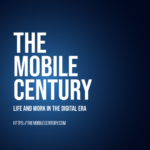Guest blog1 from Dr Mike Short, CBE Chief Architect, Satellite Applications Catapult, UK
This article tries to identify the specific areas of keen interest mainly from a Satellite industry perspective.
When looking out towards 2030 some of this QT based Innovation can be seen now through a new lens of Quantum as fitting the following categories or themes:
Sensing and Imaging – one of the key roles in the Catapult includes looking at Applications based on Earth Observation and remote sensing. This may be in response to agricultural, climate change or emergency services. Monitoring erosion or topographic change may all be part of this, coupled with the growing accuracy of imagery available from above the earth. Quantum has for some time offered prospect for improved accuracy and imagery, and some of this has been demonstrated form the UK Quantum hubs and NQT Programme. As this process is industrialised, we need to ensure Applications work can harness the best of this to benefit all Applications developers and users. Quantum holds the prospect of taking Earth Observation onto a whole new level, but we need to prepare for maximum impact and commercialisation.
Instruments – whilst QT are much more than Computation techniques, we need to recognise the importance of precision in Space based instrumentation where QT can play a bigger part. This requires stronger knowledge transfer into the space-based instrumentation community and SMEs involved. As research bridges to commercialisation in this area there may also be some skills transition challenges requiring demonstrators, testing and certification regimes that could also apply in the space domain. For maximum impact the context of the above missions needs to be understood well to ensure requirements can be specific and properly met for Space with the introduction of QT.
Position, Navigation and Timing (PNT) – QT also may change the way we look at PNT in terms of accuracy, testing and precision. This is important globally and requires a degree of standardisation in implementation to be cost effective. Some of the great work by NPL on Timing and standards is helpful in this area but the work needs to extend to all areas of PNT, with device testing and certification in mind. Accuracy for terrestrial and autonomous objects on earth will depend on higher levels of precision and resilience from the PNT supply chain. We need to be in a position where QT based developments retain the confidence of the user community. This is likely to apply to all 4 missions described above.
Communications – this is likely to evolve with QT but needs to be demonstrated, tested, and standardised. Early examples of Quantum key distribution show the power of Quantum in ensuring privacy of data transfer and privacy. The recent GSM Association Post Quantum initiative shows how Mobile operators are planning for a Quantum safe regime through new architectures and standards. Non terrestrial networks (NTN) involve satellites alongside Mobile in standardisation since ETSI 3GPP Release 17, and the requirements for Mobile – Satellite convergence are likely to grow with coverage and user requirements. Our ever-growing dependency on Broadband communications will extend to remote and rural areas as well as communications on the move where QT and future computing will make ever bigger differences. International standards in this area will be critical for cost effectiveness and appropriate communications control for both terrestrial and satellite communications.
Computing – Whilst Quantum Computing (QC) may take more time we already see the influence that Computing has had on data communications in particular alongside Internet developments. QC is likely to affect future Satellite operations and services delivery in ways we cannot yet imagine. However, we also need to design in QC when the time is right.
Space debris – We already see the challenges of Net Zero and Space debris in some of the work we already do in the Catapult. QT needs to be applied to sustainability as well as efficiency. The forecast growth to approximately 60 K satellites by 2030 shows ever growing interest in space as the constellations get bigger with much smaller individual satellites. However, the prospects of harnessing these benefits will be significantly reduced unless we address space debris in a coordinated international fashion. QT could have a major role to play in helping to minimise the risks and harness the true power from space.
It is important to acknowledge the great work undertaken so far by the Research communities in Quantum, but when looking at the sectoral opportunities there are many that now need to be explored more deeply for commercialisation and implementation. These will bring new research and innovation challenges, but the time seems right now to ensure we help smooth the way towards wider sectoral impact.
- Part of the Supercharging Innovation Week #SuperchargeUKtech https://www.techuk.org /resource/how-the-use-of-quantum-technologies-could- transform-the-space-sector.html ↩︎
Dr Mike Short , CBE is the Chair of the UK Telecomms Innovation Network Advisory Board (UKTIN AB) and Chief Architect – Satellite Applications Catapult. He was Chief Scientific Advisory at the UK Department for International Trade (DIT) from November 2017 to February 2023.
He has over 40 years of experience in the electronics and telecommunications industry, latterly as Vice President of Telefonicafor 17 years to December 2016. In that post, he managed the launch of 2G (GSM) and 3G mobile technologies in the UK, established an office in Brussels and went on to lead international research, innovation and standards for Telefonica Europe.
His career includes the promotion of international technical standards in mobile and digital technology. He is a former chairman of the GSM Association, the UK Mobile Data Association, and was president of the Institution of Engineering and Technology in 2011 to 2012.
He was honoured with a CBE in 2012 for his services to the mobile industry.




